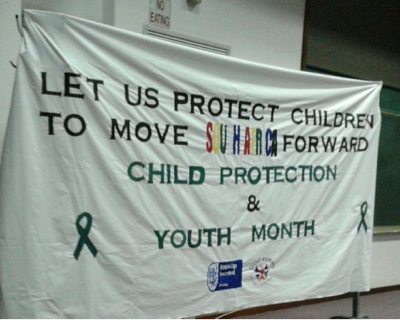Reviewing the Reading 40 Books per Learner Campaign in the Lavender Hill-Steenberg Schools .
For the past three years, we have been actively promoting independent reading at our schools. In 2013, Colleen Diedericks, then the Foundation Phase Subject Adviser, and I implemented a Literacy Improvement Strategy in our circuit. The Literacy Strategy was designed to meet three objectives.
THREE OBJECTIVES OF THE LITERACY STRATEGY
Firstly, we wanted schools to explore and interact with research that sought to explain how schools themselves entrench low literacy levels because of organizational and classroom teaching problems.
Secondly, we aimed to help schools expand their peer networks so that they could have access to more resources and support.
Thirdly, we believed that a corporate book reading campaign would help to galvanize school's literacy improvement programmes and energise them to lift the reading levels at their school. That is how the Reading 40 Books Per Learner Campaign came into being.
Let me give you an overview of the build up to launching the Reading 40 Books Per Learner Campaign.
Year 1: Engaging the NEEDU Report, 2012: A Summary
During 2013, we engaged the NEEDU Report 2012 with individual school heads and their SMTs. We encouraged schools to be reflective during this process. One of the outcomes was to establish whether schools could identify with the key findings of the researchers about school functionality and classroom reading practice. The second outcome was to help schools see if they could apply appropriate NEEDU recommendations to transform their schools.
During our engagements at the schools, we tried to keep these conversations alive and relevant. As part of our own reading with schools, we also analyzed the ANA Diagnostic report and ran workshops on ANA papers: Error Analysis, at our SMT cluster workshops.
Year 2: Promoting peer networks
Colleen organized an interactive reading conference for all the Foundation phase Heads of Department and teachers. Most of the presenters were star teachers whose children scored excellent literacy results in the Systemic Tests of the Western Cape Education Department. These presenters shared their good classroom practices that many other schools implemented later. Other talks covered topics such as Cooperative learning, the Balanced Language Approach and South Africa's literacy performance in a global context.
We introduced the concept of getting all learners to read forty books each year. There are 40 school weeks in a school year therefore we coined the Reading campaign as such. Practical problems of insufficient books in classrooms and the absence of a school library made it difficult for schools to implement the 40 books reading strategy. By the third term, there was evidence that schools were getting more of their children to read books and many had started expanding their classroom libraries. Our advocacy was beginning to pay off.
Year 3: The 40 Books Reading Campaign
This year, we rolled out the 40 Books Reading campaign in earnest. We asked school heads and SMTs to monitor reading at their schools and to equip classrooms and their school library (if it exists) with books. About three weeks ago, at our SMT forum, schools gave feedback on their progress.
Schools reported that their Foundation Phase learners had collectively read between 12,000 and 20,000 books. Two primary schools reached the target of 40 books for all their learners across all grades. Generally, there was less reading at intermediate level and at the high schools, independent reading was non-existent.
We celebrated the success of the primary schools with great fanfare. The schools themselves were proud of their achievements. They had taken a leap in promoting independent reading at their schools in about a year. Teachers spontaneously started sharing their monitoring systems and the incentives they introduced to keep learners energized. I was thrilled to hear the good news.
A reality check
Of course, not all the primary schools embraced the 40 Books Per Learner Reading Campaign as enthusiastically as others. Colleagues expressed their reservations about monitoring an activity like independent reading. Others argued that higher reading volumes and increased frequency of reading have not translated in better comprehension skills at their schools. There was also a strong argument about the unfairness of expecting poor children from the "Flats" to read 40 books.
These are all valid, but flawed arguments that I will respond to in a follow up post. In short, reading proficiency and language development are complex, cognitive activities that cannot be solved by promoting independent reading only. However, independent reading is core to improving learners' literacy levels and therefore it should be advocated aggressively.
Having said that about the limitations of isolated reading campaigns, I can only express my admiration for colleagues who are willing to experiment with a focused, targeted activity like monitoring and measuring the number of books that all learners are reading at school. This is a powerful step, a good step to build on as schools battle to raise the literacy proficiencies of their children.
Well done to all the schools. I am SUPER proud of you!
What do you think of running specific reading campaigns at your school? Do share your own experiences so that we can grow as powerful as you.




Comments
Post a Comment